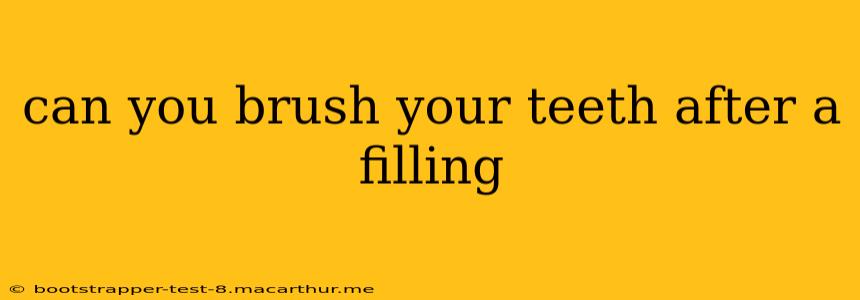Can You Brush Your Teeth After a Filling?
Getting a dental filling is a common procedure, but the post-filling care can sometimes be confusing. One frequently asked question is: can you brush your teeth after a filling? The short answer is yes, but with caution. The immediate aftermath of a filling requires a gentle approach to protect the newly placed material and the surrounding tissues.
How Soon After a Filling Can I Brush My Teeth?
Ideally, you should wait at least 2 hours after getting a filling before brushing your teeth. This allows the anesthetic to wear off completely and the filling material to begin setting properly. Some dentists may recommend waiting even longer, depending on the type of filling used. Always follow your dentist's specific post-operative instructions.
What Type of Toothbrush Should I Use After a Filling?
Use a soft-bristled toothbrush to avoid irritating the area around the filling. Hard bristles could dislodge the filling or damage the already sensitive tooth. Gentle brushing is key.
What Kind of Toothpaste Should I Use After a Filling?
You can use your regular toothpaste. However, avoid abrasive toothpastes, especially in the first few days after your filling. Abrasive toothpaste can damage the bonding between the filling and the tooth.
Can I Use Mouthwash After a Filling?
Generally, you can use mouthwash after a filling, but again, wait at least two hours. Choose an alcohol-free mouthwash to prevent irritation to the sensitive area. Avoid swishing vigorously; instead, gently rinse your mouth.
What If My Tooth Still Feels Sensitive After a Filling?
Some sensitivity is normal after a filling, especially in the first few days. However, if the sensitivity is severe or persistent, contact your dentist. Lingering pain could indicate a problem with the filling or an underlying issue. Don't ignore persistent discomfort.
How Long Does it Take for a Filling to Fully Set?
The setting time varies depending on the filling material. Composite fillings (tooth-colored) typically set within minutes, but it can take a few hours for complete hardening. Amalgam fillings (silver) require longer, usually 24 hours. Your dentist will provide you with precise instructions based on the material used.
Should I Avoid Certain Foods After a Filling?
For the first 24 hours after a filling, it's advisable to avoid extremely hot or cold foods and drinks, as well as sticky or hard foods that could dislodge the filling. Once the filling has completely set, you should be able to resume your normal diet.
What are the Signs of a Problem with My New Filling?
Be mindful of any lingering pain, sensitivity to temperature, or changes in the appearance of the filling (e.g., chipping, cracking). These could signal a problem, requiring a follow-up appointment with your dentist. Early detection is crucial for successful long-term results.
In conclusion, while you can brush your teeth after a filling, it's essential to exercise caution and follow your dentist's instructions carefully. Gentle brushing, a soft-bristled toothbrush, and avoiding harsh mouthwashes for the first few days are critical for ensuring the longevity and success of your new filling. Remember, proactive care is key to maintaining optimal oral health.
